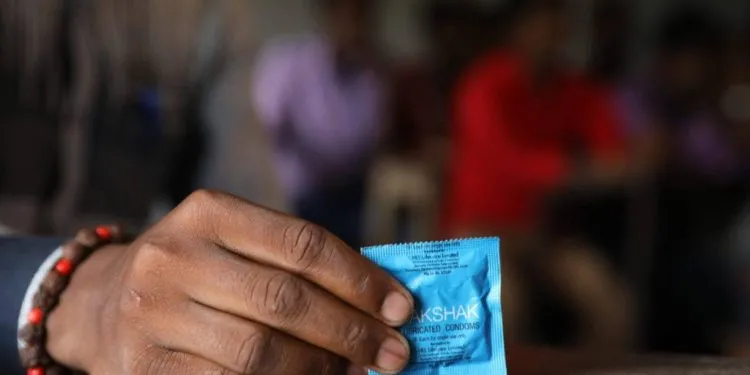By Marie N. Carnu
Youths in Cameroon have expressed reluctance to use condoms during sexual intercourse, stating that it limits sexual pleasure and causes discomfort.
Although condoms are crucial in preventing sexually transmitted diseases (STDs), misconceptions have fueled their use decreasing use among youths, leading to a surge in unwanted pregnancies and STDs like HIV.
On the streets of Yaounde, MMI sampled the views of some young residents who shared their views about condom use.
“I’ve used condoms before, but they’re uncomfortable, and I sometimes get wounds. I prefer the pullout method with my partner, which hasn’t caused any issues so far,” said a young woman who preferred not to be named.
He response reflects a growing trend of neglecting condom use in favor of alternative contraceptive methods without considering the risk of STDs.
A study conducted in 2022 observed that a sharp decline in condom use among youths in Cameroon has led to a surge in unwanted pregnancies, sexually transmitted diseases (STDs), and HIV/AIDS infections.
Condoms, thin latex shields designed to prevent direct body contact during sexual intercourse, play a crucial role in preventing STDs and unwanted pregnancies.
However, many young people in Cameroon either lack awareness or have misconceptions about their proper use.
Fifty percent of youths sampled in the 2022 study earlier cited held misconceptions about condom use, 30 percent were completely unaware, and only 10 percent fully understood their importance.
Many mistakenly view condoms solely as a means of pregnancy prevention, unaware of their role in preventing diseases like syphilis, gonorrhea, and HIV/AIDS.
“I only use condoms when I’m in my fertile period to prevent pregnancy,” said a woman in her early 20s, highlighting a gap in understanding the broader health benefits.
Some youths even admit to never using condoms.
One young woman said, “I have never used them and don’t even know how they work,” adding that she relies on family planning and medical checkups.
Many others also choose birth control pills or other contraceptive methods, often neglecting the importance of disease prevention.
Discomfort and reduced pleasure are common reasons why many avoid condoms.
“I’ve only used condoms three times since becoming sexually active. They’re irritating and reduce pleasure, so my partner and I use the pullout method,” a young man said.
Not Enough Education In Schools
A secondary school teacher in Yaounde told this reporter the lack of sexual education in schools contributes to the misconceptions about condoms use.
“I’ve taught in two schools since last year, and neither has organized a sex education class for students,” he said.
“There’s simply not enough education about condoms in our schools.”
This decline in condom use has affected sales as well. Several drugstore owners report a drop in purchases, with most buyers being adults.
Women are less likely to buy condoms, and those who do tend to purchase them for one-night stands.
“One woman bought condoms for a one-night stand, saying she needed them just in case her partner didn’t have any,” a seller recalled.
Cost also poses a barrier. Some youths believe that high-quality condoms are too expensive, while cheaper ones are prone to breaking.
However, drug sellers argue that condoms are produced to similar standards but marketed differently. “It’s all about marketing; every brand wants to make money,” one seller noted.
In rural areas, condom awareness is even lower. A nurse in Obala, a district in Cameroon’s Center Region, observed: “We see many teenage mothers aged 12-15, which shows a serious lack of sex education.”
In Akonolinga, a nurse said, “We’ve had young people aged 15-18 come in with HIV/AIDS. There’s a lack of awareness in schools.”
Lack Of Parental Education
Parents, too, are hesitant to discuss condoms with their children.
“It feels inappropriate for me to lecture my children on condom use—it’s like giving them permission to engage in sex,” one parent said. Another added, “Back in the day, students were taught sex education, and condoms were distributed, but that’s no longer the case.”
A nursing student from Yaoundé shared a contrasting experience, stating, “We receive lectures on condom use in school, and they give us free condoms, but I don’t use them.”
The World Health Organization (WHO) recently raised concerns over the global decline in condom use among teenagers. Surveys conducted between 2014 and 2022 on 15-year-olds across 42 countries found that teens from poorer backgrounds were less likely to use condoms—a trend also observed in rural areas of Cameroon, where unwanted pregnancies are common due to limited access to contraceptives.
Research published by the Health Sciences and Disease Journal (2018-2022) found that adolescents attending youth centers were more likely to use condoms than their peers in secondary schools.
This highlights the lack of sexual education in many schools and underscores the importance of raising awareness among youths, particularly in rural areas. With rising HIV/AIDS cases, there is an urgent need to rethink sexual health education and the promotion of condom use among Cameroonian youths.



